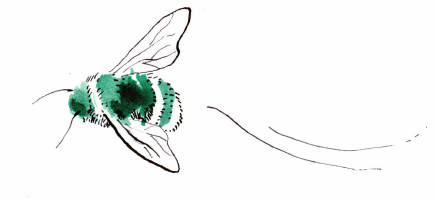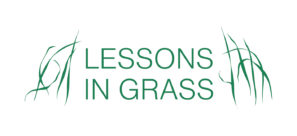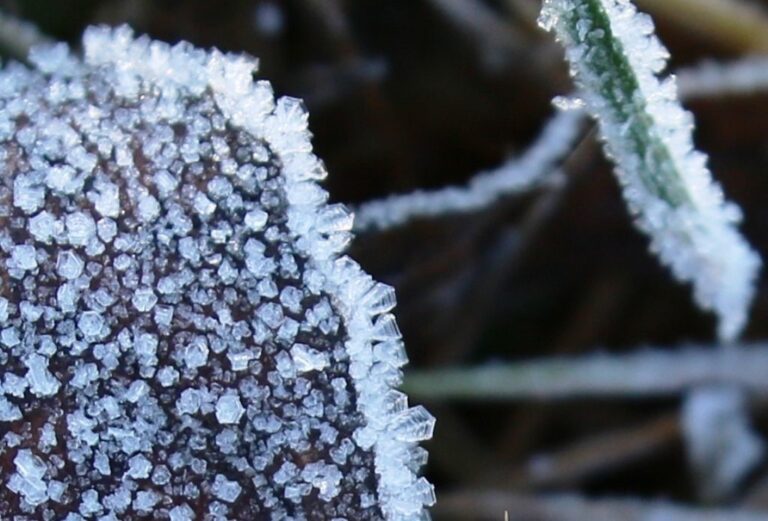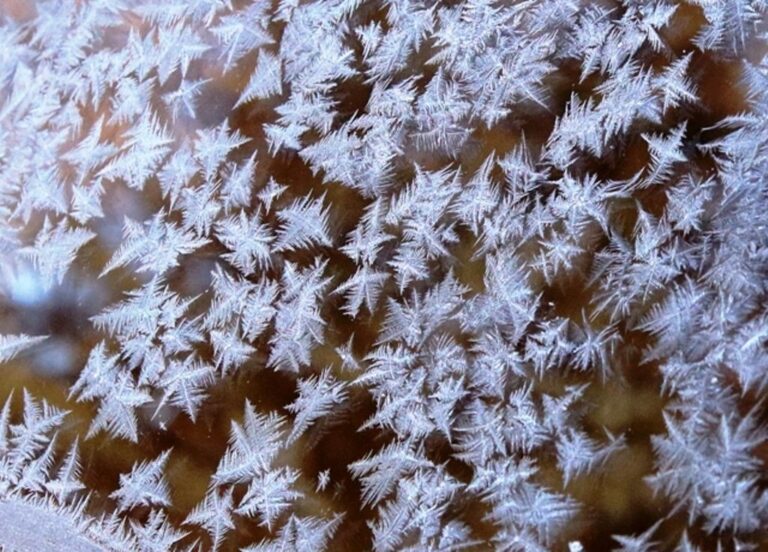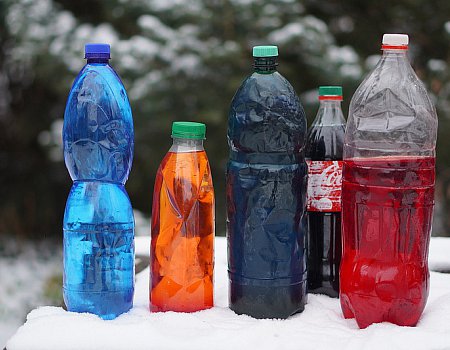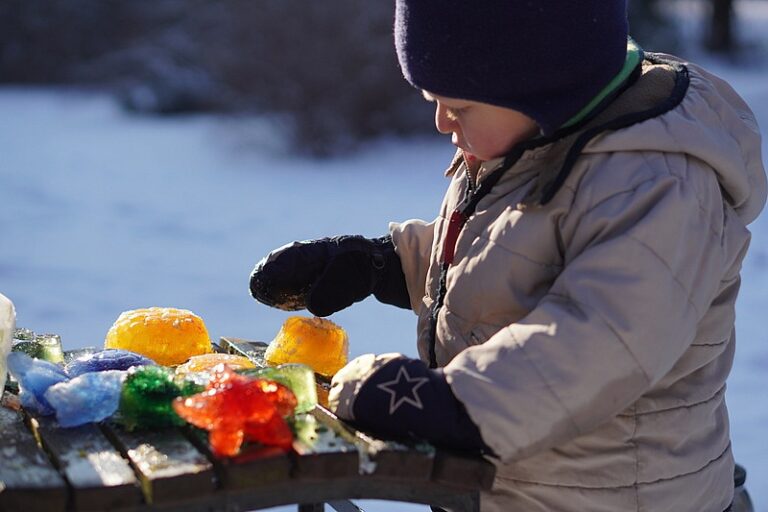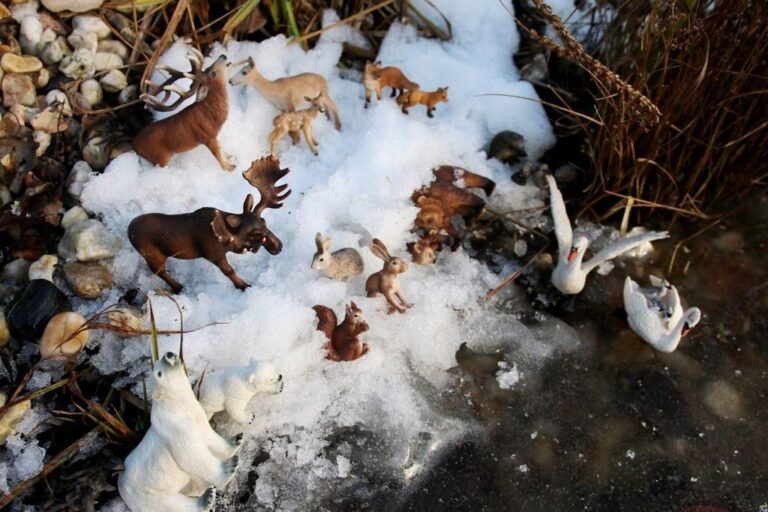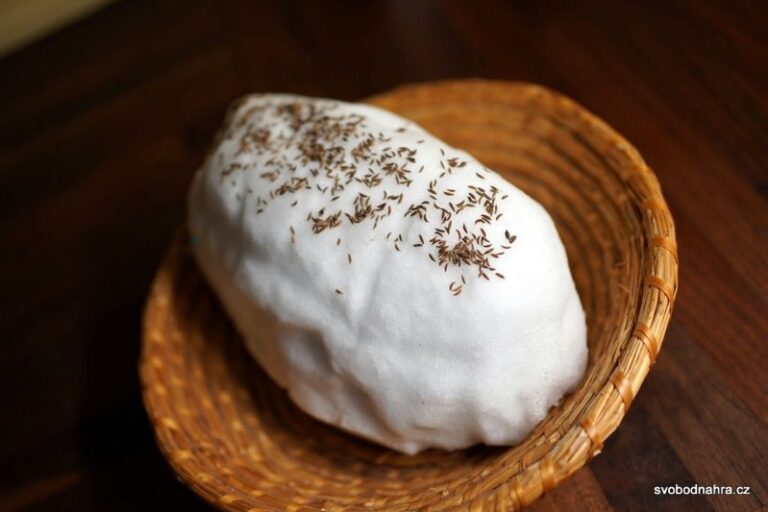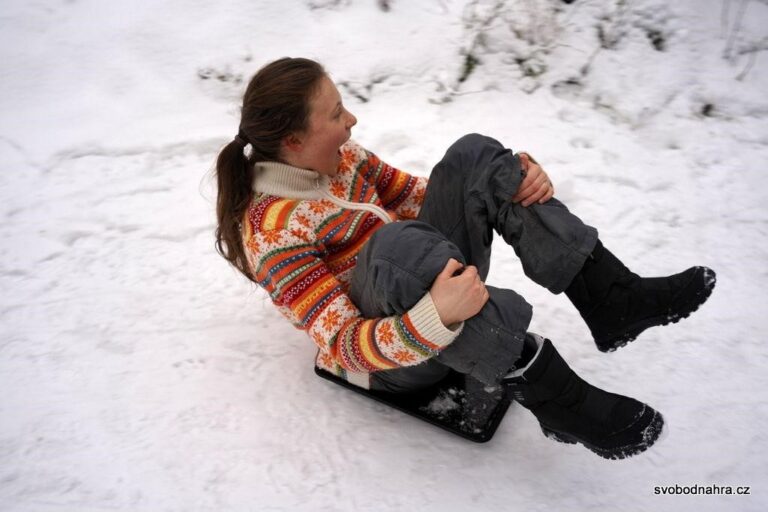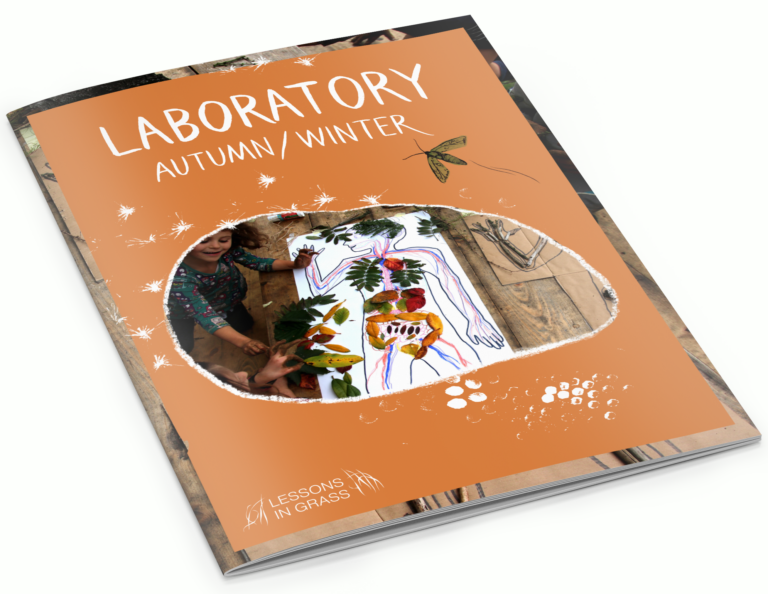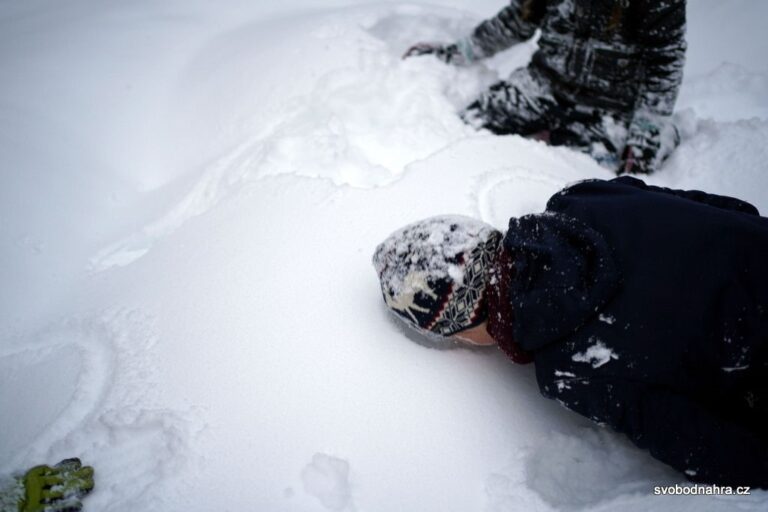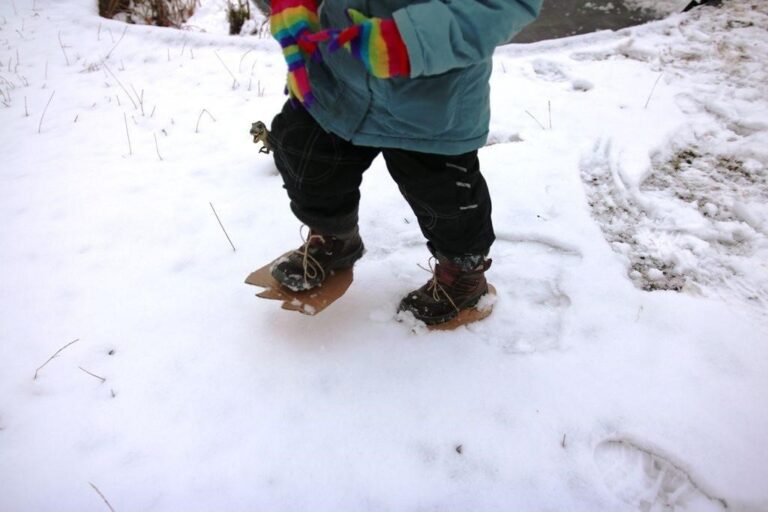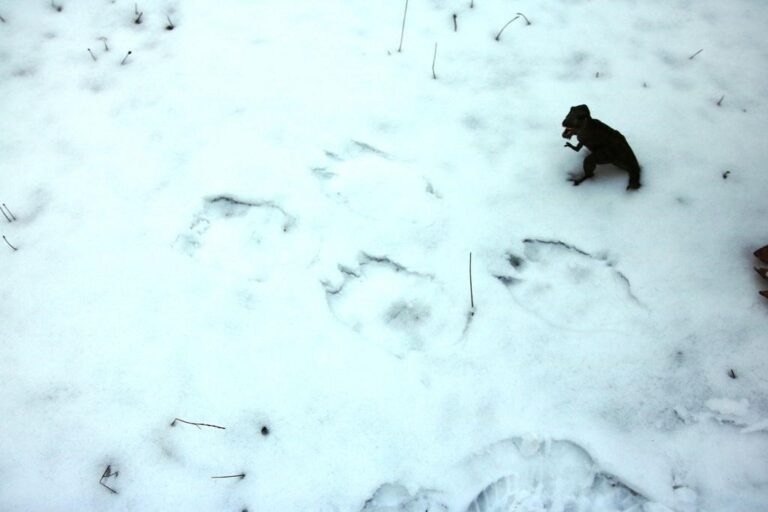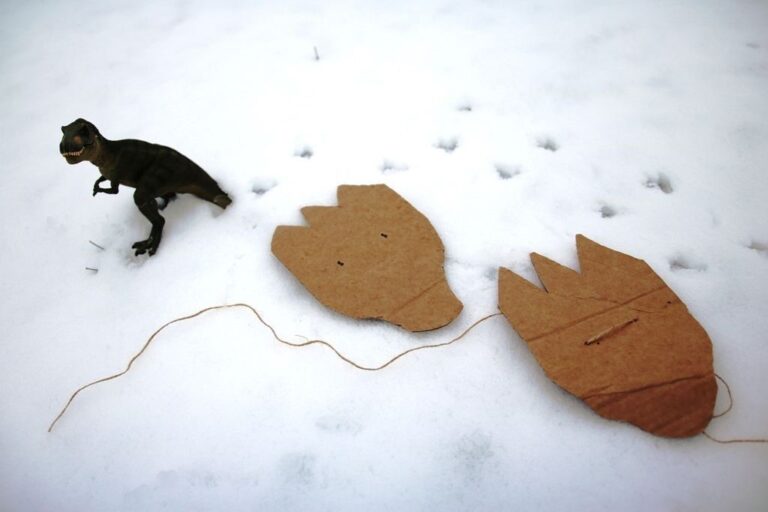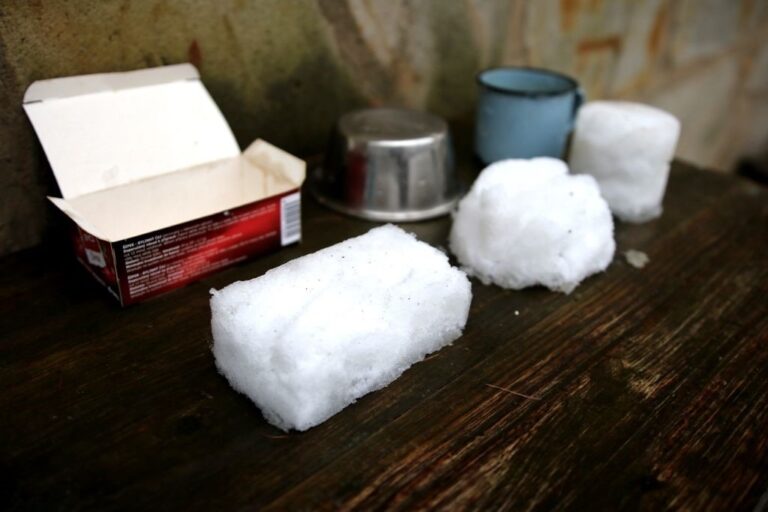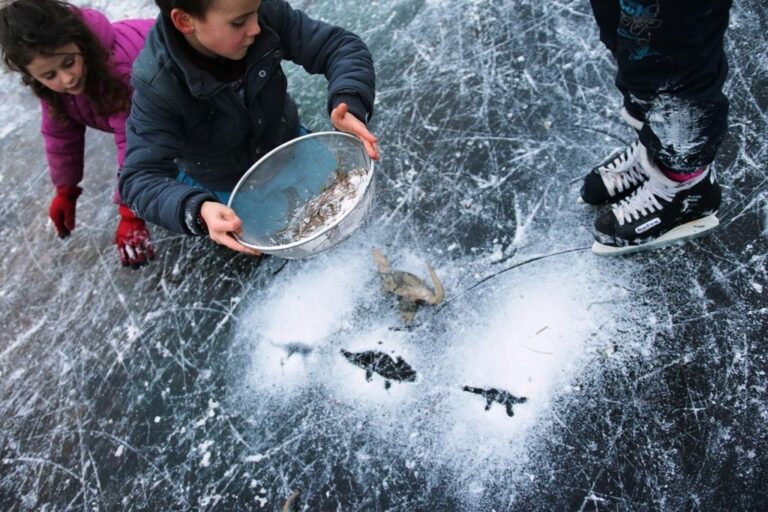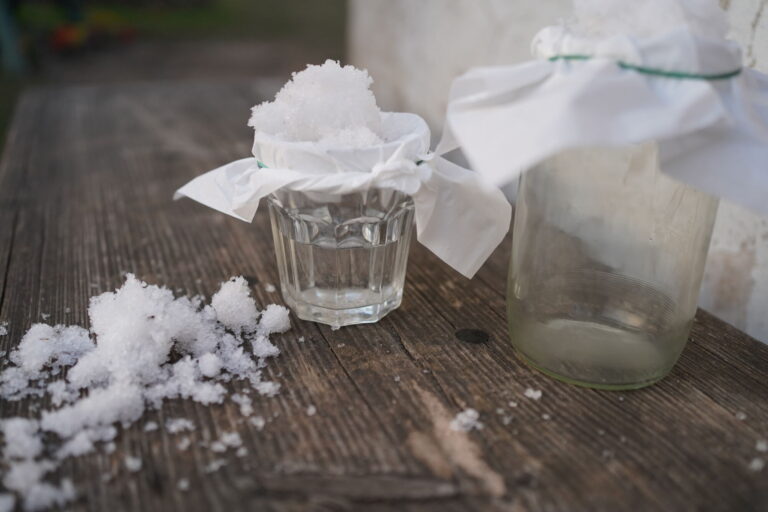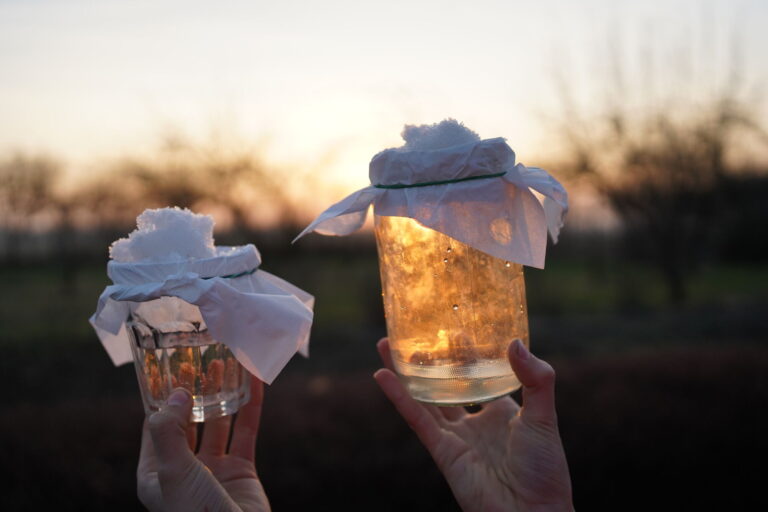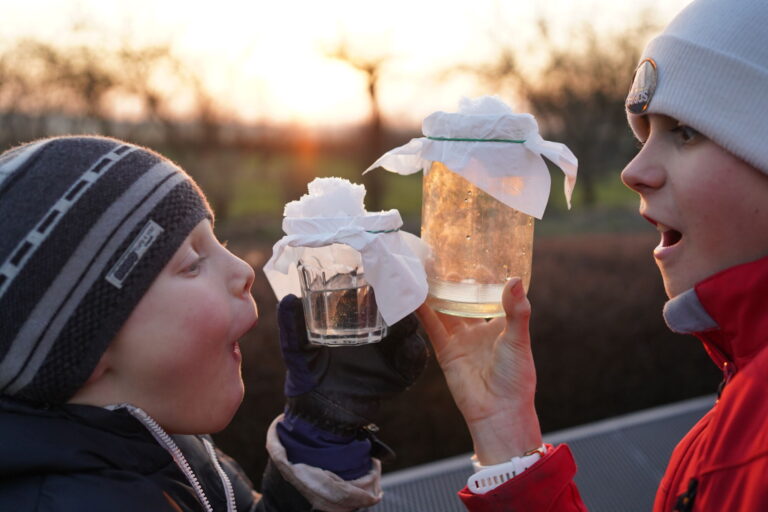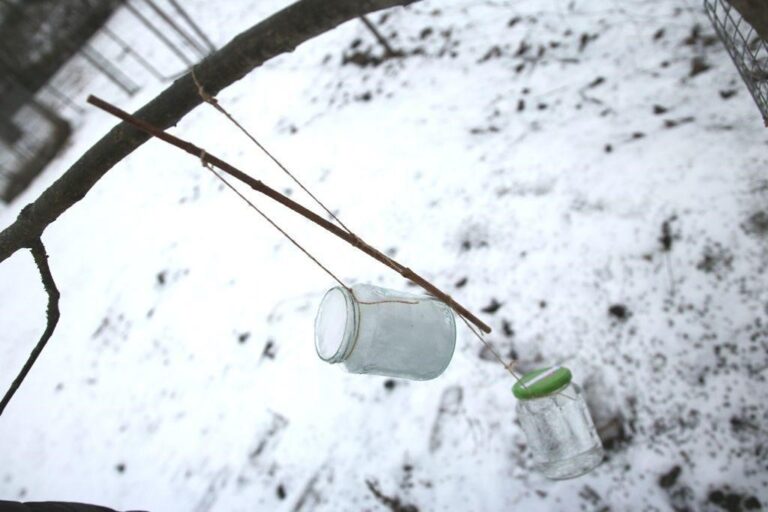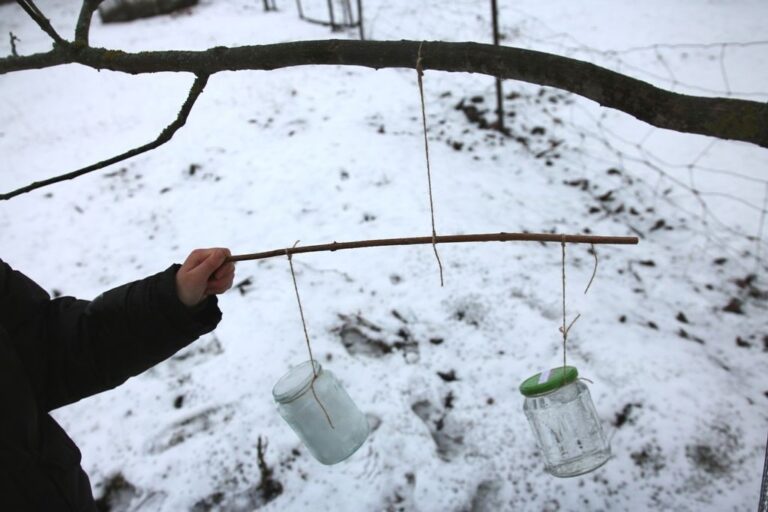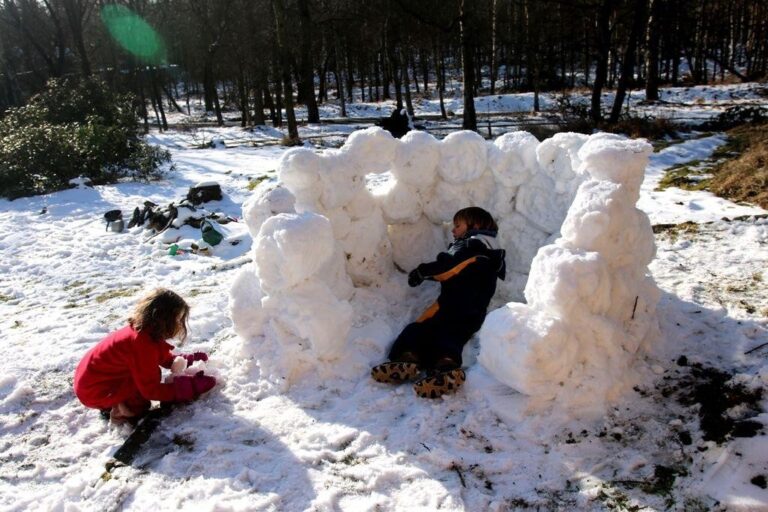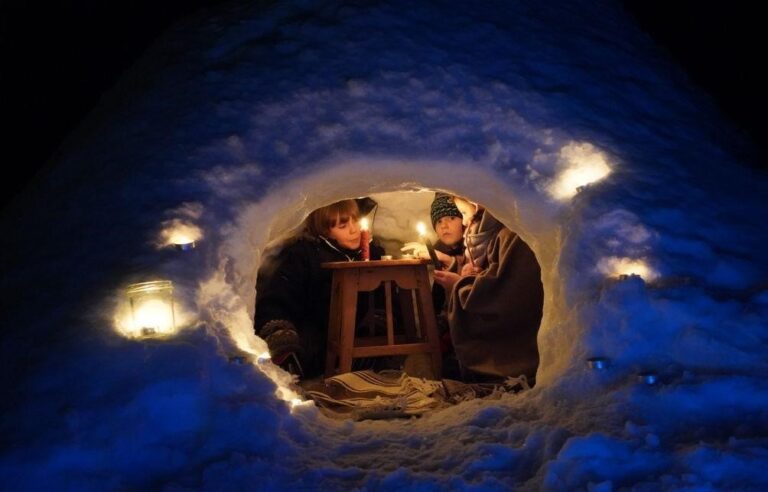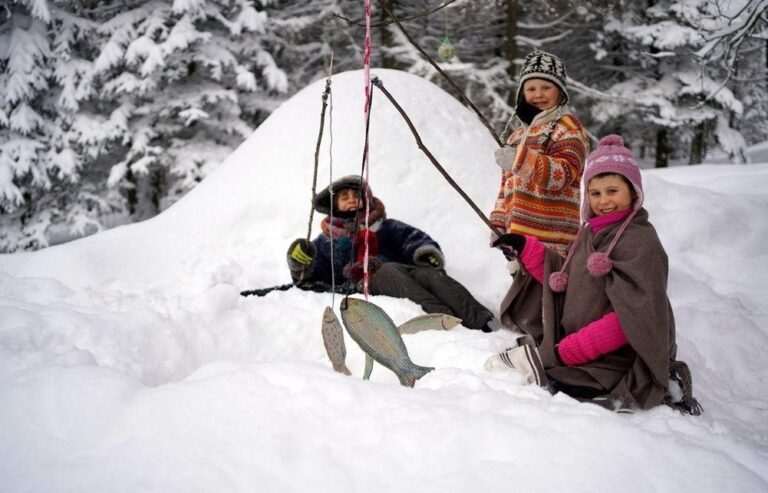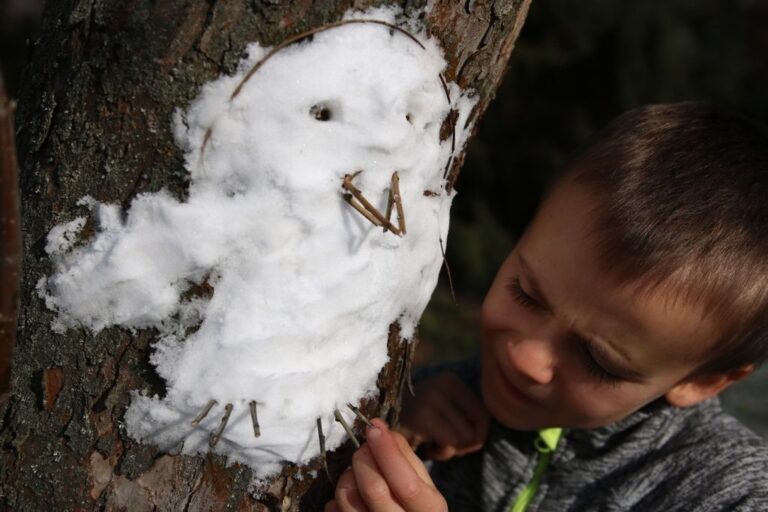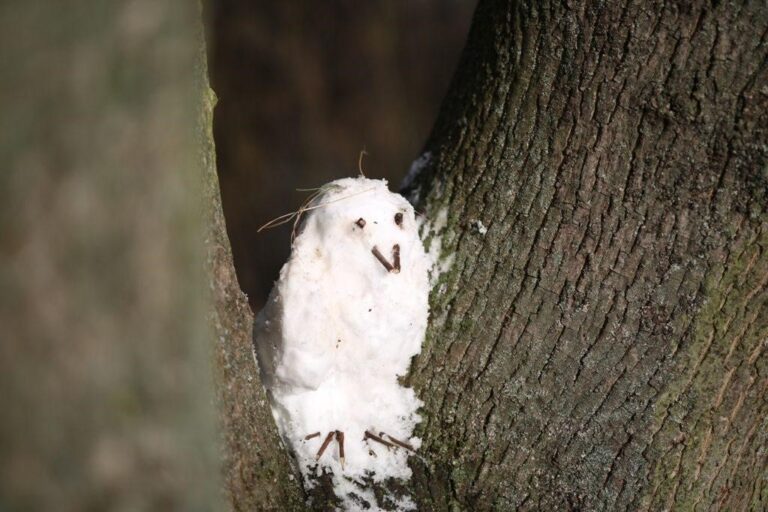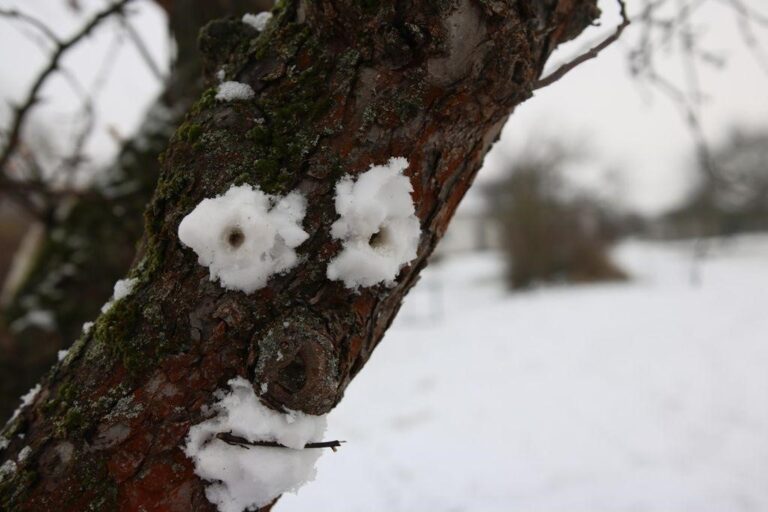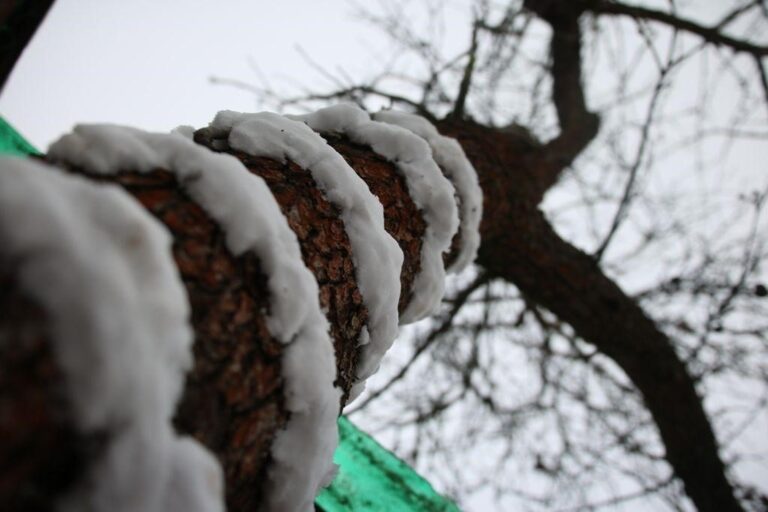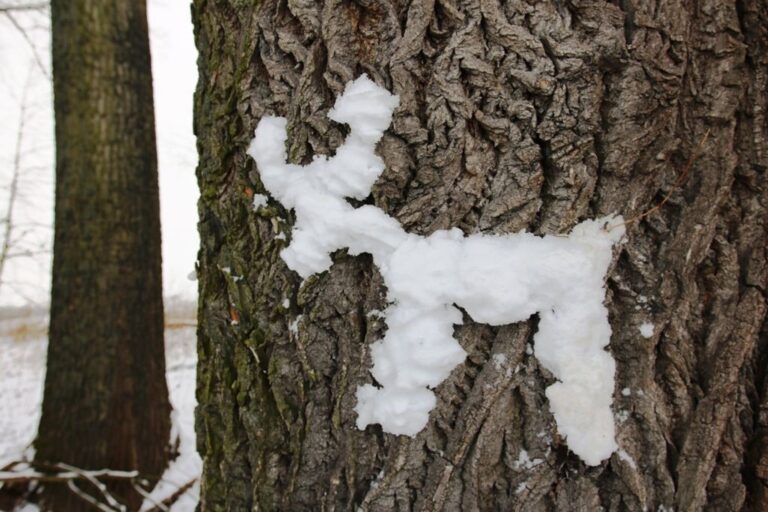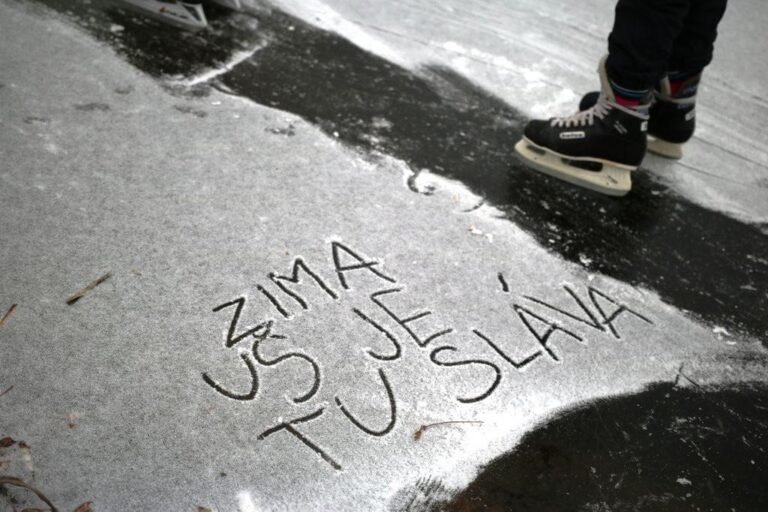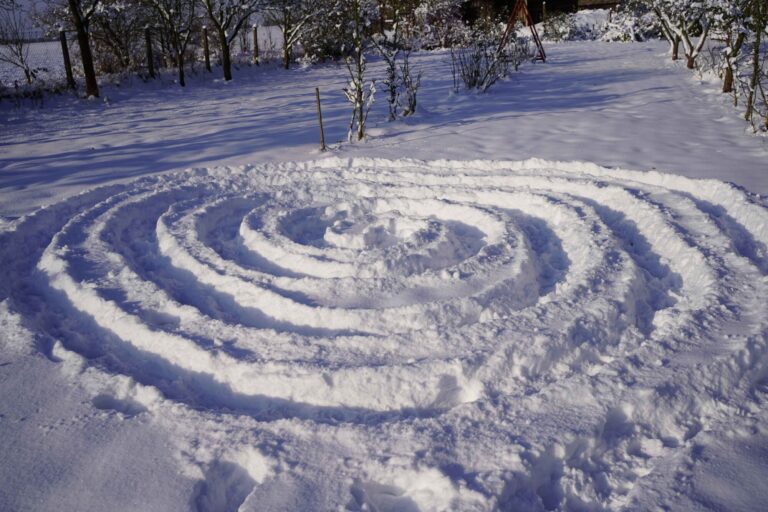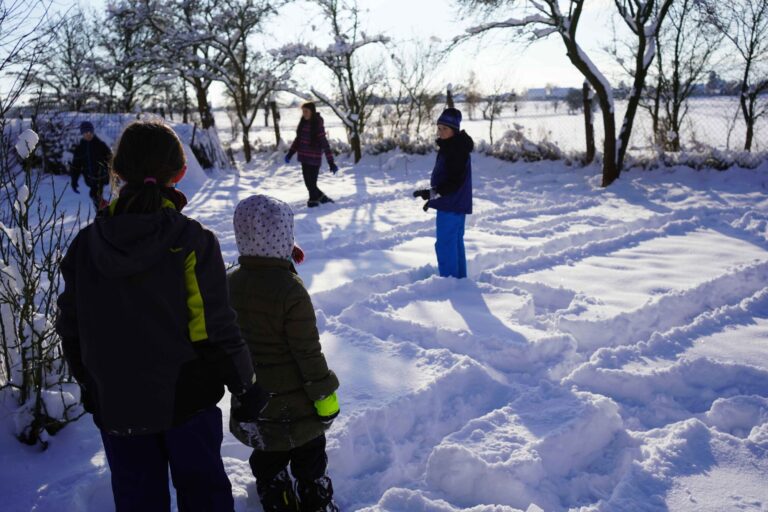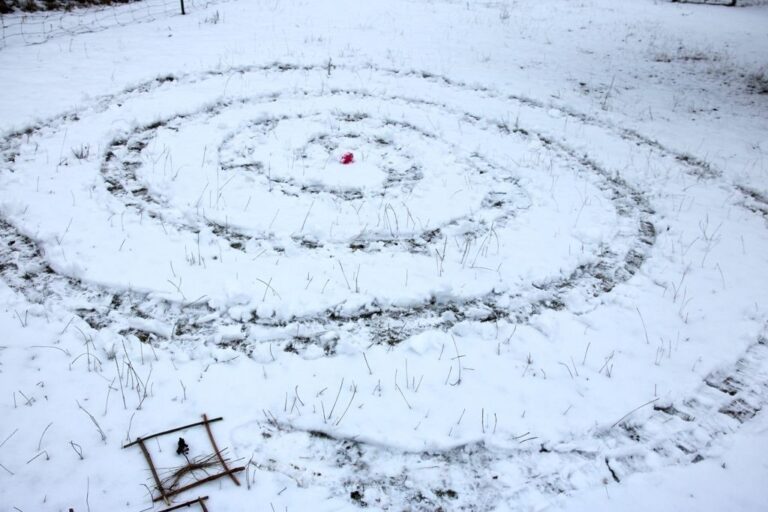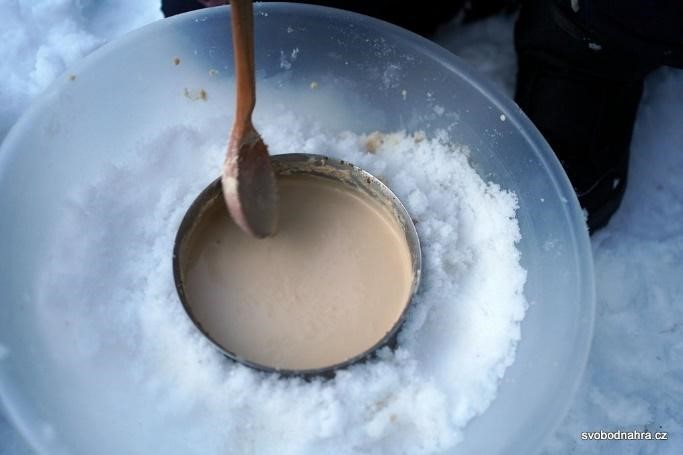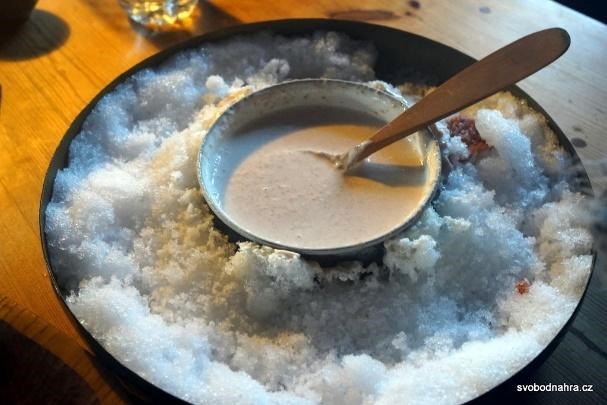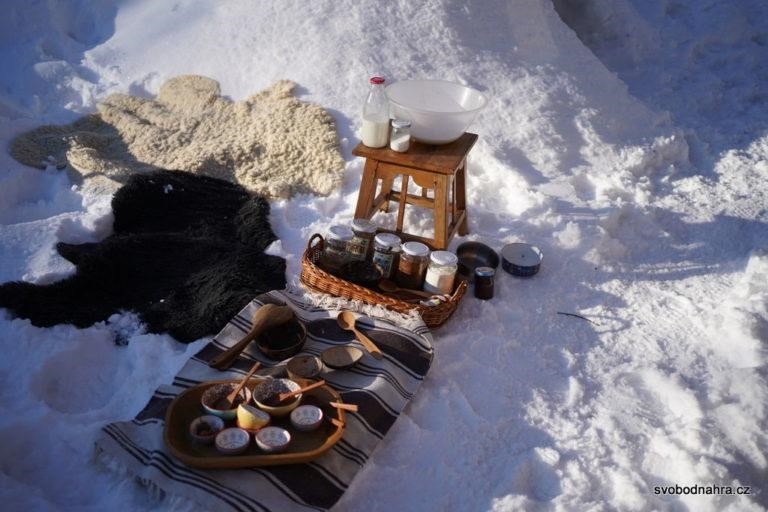winter activities
FEBRUARY

Looking forward to spring and Easter? Let's decorate some snow eggs.
YOU WILL NEED: egg trays, natural paints or watercolours
HOW TO DO IT:
A short and playful creative activity. If you have made natural paints, we recommend you use them to paint Easter eggs. Just take an egg tray for each group, make snow eggs instead of snowballs and decorate them.
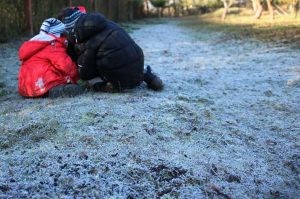
YOU WILL NEED: morning hoarfrost around your school
HOW TO DO IT:
Is the sun shining while there is still morning frost on the lawn around the school? This is a great time to do some research observations.
Have the children try to estimate and then measure how quickly the sun moves and how quickly the frost on the grass melts. It is beneficial to first write down your estimate with the children (e.g. at 10:00 the hoarfrost is melted all the way to the sidewalk, at 11:00 at the goal post, for example). Then measure and record everything more precisely.
Finally, compare your estimates with the measurements. When you are out, you can also observe what effect the shadows of tree trunks, shrubs or fences have on melting speed and how the hoarfrost at the various cardinal points is melting.
YOU WILL NEED: morning hoarfrost around your school
HOW TO DO IT:
Hoarfrost crystals are best observed when there is no snow covering. If you are not lucky enough to find large crystals, we recommend using a magnifying glass or taking pictures and enlarging them on the computer. It is often very surprising for children to learn that hoarfrost has a structure very similar to the crystals of many minerals.
YOU WILL NEED: morning hoarfrost on glass surfaces, paper frames
HOW TO DO IT:
Work individually or together in groups and search the grounds for interesting hoarfrost art. Have the class create a frosty art gallery. Use paper frames to mark the prettiest hoarfrost pictures.
Is it freezing outside? The sandpit is snowy, frozen and you can't make mud pies? How about taking your favourite moulds and filling them with ice instead of sand?
YOU WILL NEED: moulds, food colouring, warm water in a thermos
HOW TO DO IT:
Colour some water with food colouring and make a colourful sculpture garden out on the snow. Let the water freeze in the moulds overnight then use hot water from a thermos to get them out. Simply pour some hot water over the moulds and the pies will come out easily.
Winter is almost over, maybe you don't have snow anymore and the freezing temperatures are also gone. Review some vocabulary of a foreign language outdoors!
YOU WILL NEED: tags with words, cardboard frames
HOW TO DO IT:
Outside, you can also review some vocabulary of a foreign language. Just go for a walk and name objects or tell stories about the things you see around you (or whatever your imaginations come up with).

An experiment that shows how different colours reflect or absorb sunlight.
YOU WILL NEED: white and black buttons
HOW TO DO IT:
We recommend trying this experiment when the sun is shining, Place large white and black buttons on the snow (or a circle each of white and black paper if you don't have the buttons).
Leave the buttons/circles on the snow and in about 15-30 minutes (depending on the intensity of the sun's rays) you can observe the change. Which button/paper will sink first?
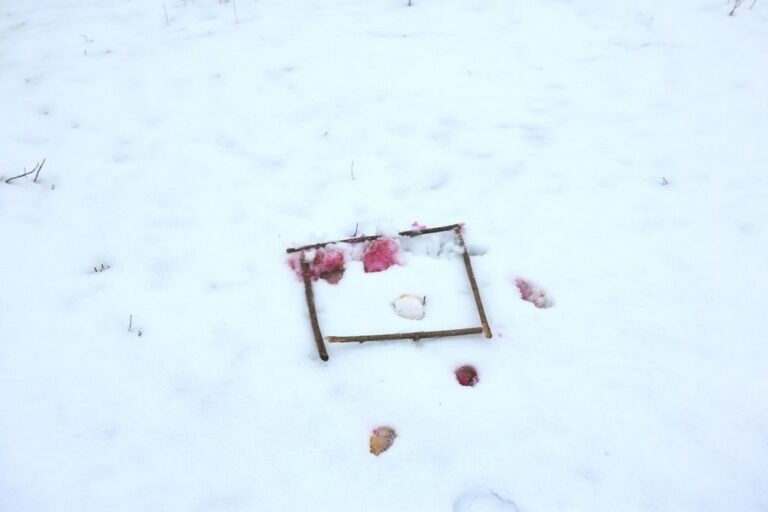
How many times were you allowed to throw eggs at the target?
YOU WILL NEED: twigs for the target
HOW TO DO IT:
When your Easter eggs are finished, you can display them as decoration or practise your throwing at a target to improve your accuracy. Mark a target with a circle in the snow or a square made of twigs.
Who will get their eggs the closest?
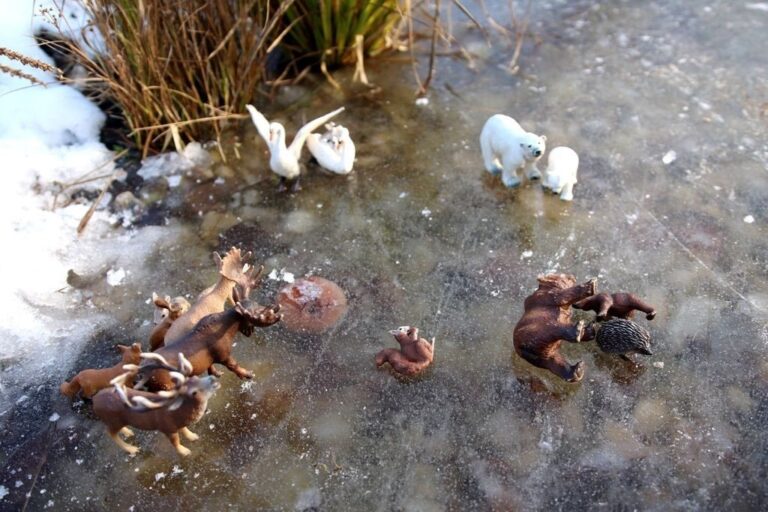
Take plastic or wooden animals outside and play the game "Who sleeps in winter?" with the children.
YOU WILL NEED: plastic or wooden animals
HOW TO DO IT:
Hide the animal figures (preferably in a smaller area as they are easily lost in the snow). When the children have found all the animals, ask them to divide them into four groups.
Who is active in winter, who sleeps through it, who flies to warmer regions and who does not naturally live in your country?
A lively discussion is sure to happen which is great to support. Leave the factual research for the end to find out how things really work.
The last activity can be creating snow models or looking for shelters – what might be sleeping in your area and where? Are we disturbing them? Should we create more shelters? How?

A challenge where everyone can find their role.
YOU WILL NEED: a cardboard animal, a stuffed animal or a plastic figure, a camera or a mobile phone
HOW TO DO IT:
Make a documentary about the life of an animal in your neighbourhood that does not sleep in winter. Fox, tit, blackbird, hare, owl, buzzard, roe deer or even river otters. What does it do during the day? Where does it look for food? Where does it hide? Is it a loner or does it have a family, a pack or a herd?
It is good to choose an animal that the children know well, can observe at a feeder, can find its tracks or can see in nature. All this will allow deeper insights into what should be in the documentary. You can read books or browse the Internet together to learn everything you need if necessary.
Then all you have to do is write out the script, choose filming locations and backdrops as well as make the “actors” (cardboard animal, a stuffed animal or a plastic figure etc). You can also divide roles in the film crew and decide on who will watch out for this or create that. Then it's time to shoot. You can draw comics, take a set of photos or, ideally, shoot footage that will then be edited and made into a short film.
Don't forget to organise the premiere of your documentary and invite your friends and family and, ideally, take them out for a walk afterwards.
Do your children enjoy their mud kitchen? Try white kitchen too!
YOU WILL NEED: bread basket, caraway or "soil" spices
HOW TO DO IT:
In winter be sure to try cooking and baking in the snow kitchen. How about baking some bread? A quick creative activity children love. Shape one loaf each which you can flavour with spices like caraway. Then bake it, slice it and sprinkle it with snow salt. The baking can take place outside, but if it's too cold, children like to take it inside too.
Winter adrenaline for the brave ones.
YOU WILL NEED: a baking tray
HOW TO DO IT:
Have you already enjoyed sledding and sleighing, and want more adrenaline? Or you now have a nice slope near you but you have nothing to ride on?
Why not try good old-fashioned baking trays? The children will be delighted. Just be careful, they are fast and hard to stop. We recommend not testing them on a steep slope.
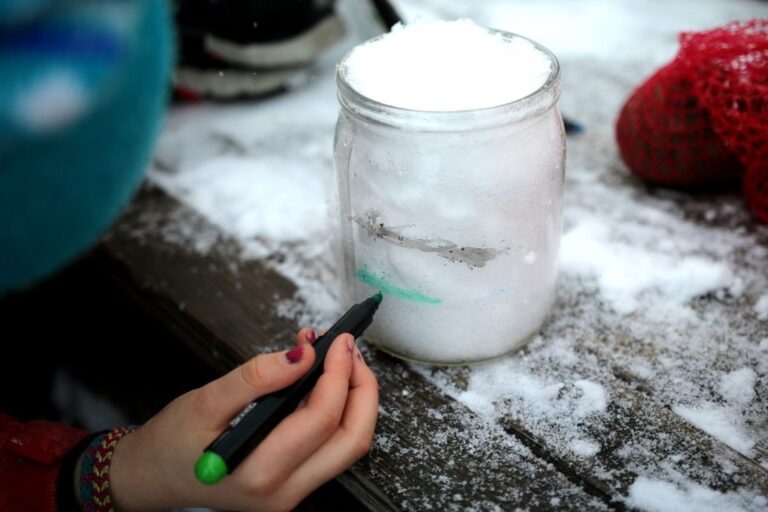
Welcome in the White Laboratory! Let your children become scientists who make their own hypotheses, and come up with a way to test them.
YOU WILL NEED: jars or other transparent containers, markers (ideally two colours - one for our hypotheses the other for the reality)
HOW TO DO IT:
It is often quite surprising for children to see how little water remains from a full container of snow after it has melted.
We recommend warning the children not to pack the container with too much snow. Let them scoop up a full container of slightly "fluffy" snow.
After taking the sample, the children should indicate their estimate of where the water level will be after the snow melts.
Finally, compare the result and your estimates.
Some children like challenges - here is a chilly one for the brave. Have fun!
YOU WILL NEED: a bit of courage
HOW TO DO IT:
A lovely quick and playful activity. Children stamp their faces in the snow and watch the magic. The stamped face looks like a reverse raised relief.
It's definitely worth a try if the children dare. Then they can guess whose face it is.
It is important that the snow is powdery. We do not recommend doing it in frozen snow.
Use your imagination and creativity and become a dinosaur, a unicorn or an elephant.
YOU WILL NEED: a large piece of cardboard, strings, scissors
HOW TO DO IT:
All you need is a piece of large cardboard for each group, scissors and two strings. The children must decide what tracks they want to make (dinosaur, elephant, giant duck) and cut out the chosen shape in cardboard.
In the middle of the track, they make two holes with scissors, put a string through and tie it on their shoes.
Track testing must be done slowly, cardboard tears and bends easily. Just a few tracks are enough though and then the different tracks are compared.
Math in the snow - children learn geometry and fractions without even noticing it 🙂
YOU WILL NEED: containers of various kinds and shapes, sticks or strings for dividing the shapes
HOW TO DO IT:
Take various kinds of containers outside into the snow and try to make snow "bricks" with different geometric shapes.
You can continue shaping the bricks and try to create a cube, cuboid, sphere, pyramid, etc. All the shapes can be further divided (into halves, thirds, quarters, etc.).
A very popular playful activity. Let it snow!
YOU WILL NEED: colanders, natural items, animal figures
HOW TO DO IT:
Take a set of colanders outside and have the children test how snow falls from the clouds. Just scoop up the loose snow and shake the colander.
Our group of children came up with a great “snow outlines” game. A natural object or an animal figure is placed on a cleaned dark surface – ice, sidewalk, wall, sheet metal, board – and it gets snowed on. Then the figure or object is carefully removed, leaving a beautiful silhouette on the surface.
The children in one group can create several outlines and the second group has to match the outlines with the correct figures or natural objects.
Is snow as clean as it seems? Make an experiment with samples from different places.
YOU WILL NEED: jars or glasses, rubber bands or string and scissors, paper filters or tissues
HOW TO DO IT:
Pass the melted snow through filter paper or tissue and observe how much dirt there is in snow. We recommend that you fold the edges of the tissue or filter paper upwards to prevent water from dripping.
We recommend that children should take samples from different locations around your school (by the road, in the garden, by the sidewalk, on a tree, etc.) and then compare the cleanliness of the snow.
Is snow heavier than water or vice versa?
YOU WILL NEED: two mason jars, string, scissors, a straight twig (or a clothes hanger)
HOW TO DO IT:
What is heavier – a glass full of water or a glass full of snow? And by how much? Is the difference tiny or big? How can you find out outdoors without a scale? Just pack two mason jars, string, scissors and a straight twig (or a clothes hanger). Make a simple scale from a twig and a string, hang two empty jars on it so that they are in balance, and only then add water to one and snow to the other. We recommend closing the jars after. What will happen?
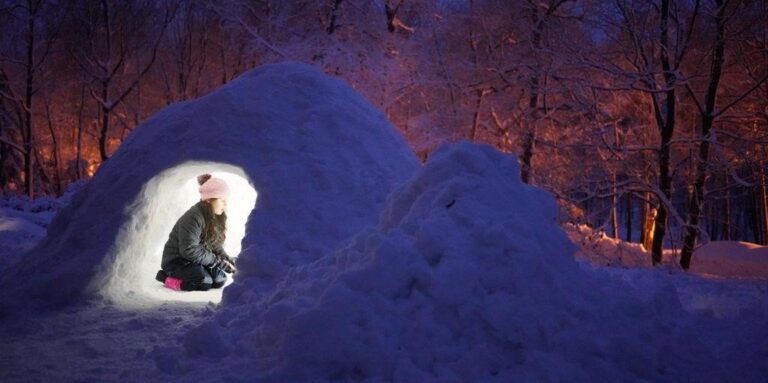
A real igloo remains as a beautiful childhood memory for a lifetime. Do it for your children too. It's a joint effort and a powerful experience when you get it done.
YOU WILL NEED: enough snow, time and enthusiasm for building
HOW TO DO IT:
It may not seem like it at first glance but real-world construction tasks are great for developing maths skills. If you have enough snow, time and enthusiasm, we recommend that you and your children build something bigger.
There are several ways to build an igloo (you can dig it out of a pile of frozen snow, gradually build perimeter walls from large balls or assemble it from manufactured snow bricks).
Furnish your igloo with rugs and small "furniture" and the play will stop only when the snow melts 🙂
Light up the igloo at night time, it looks beautiful.
A quick and playful creative activity.
YOU WILL NEED: snow, sticks, (clay)
HOW TO DO IT:
Sticky snow is great for modelling. You can create a 2D owl on a tree trunk or, for an even bigger challenge, a 3D owl sitting on a branch. If you don't want a snowy owl, you can try colouring the top layer of snow with, for example, clay. It's a quick, playful creation that only needs a little dusting of snow. So get outside. What will come to life in your area?
Make nice winter decorations around your house or school.
YOU WILL NEED: sticky snow, twigs, natural materials for creating
HOW TO DO IT:
Sticky snow is great for sticking to tree trunks. Children can make faces for the trees, decoration or use the tree trunk as a canvas for pictures of animals or other land art.
Make the school day special and use the outdoor whiteboard for maths or languages. You'll see the difference!
YOU WILL NEED: a thin layer of snow
HOW TO DO IT:
A thin layer of snow on the sidewalk or ice is great for writing and painting. Test the new board right next to the school and paint geometric shapes or write messages for winter.
Will you get lost or will you find your way in a maze? Either way, you'll have a great time!
YOU WILL NEED: nothing 🙂
HOW TO DO IT:
Creating labyrinths supports both mathematical and spatial imagination. Divide the children into groups and have them create a simple (spiral) or more complex intertwined labyrinth in the snow complete with a start and a finish. This will result in several mazes that the groups can then take turns going through. Children often invent their own improvements to the game such as hidden snow treasures at the end of the labyrinth.
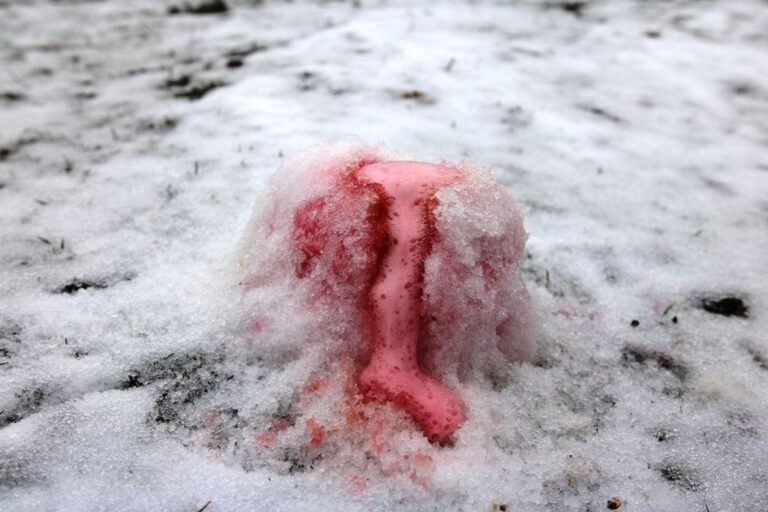
An exciting experiment in a winter setting.
YOU WILL NEED: bicarbonate of soda (baking soda), vinegar, optionally turmeric powder, curry or beetroot juice, a container with lid
HOW TO DO IT:
You have probably already tried a mud or sand volcano with the class. Winter is the perfect opportunity to try a snow volcano. The idea is the same.
Pour bicarbonate of soda into the bottom of a container. Then close the container and pile a volcanic cone around it.
You can discuss with the children the different shapes of volcanoes according to the fluidity of the lava (stratovolcanoes, shield volcanoes, etc.). When the volcano is ready, open the container and the children can pour vinegar into it or vinegar mixed with a dye (ideally natural, such as turmeric, curry or beetroot juice).
Now you can watch the bubbling lava destroy the crater. You can pour vinegar repeatedly, it will depend on how much soda you used. We recommend not using a lot of the soda if there isn't that much snow because it can damage the grass under the snow.
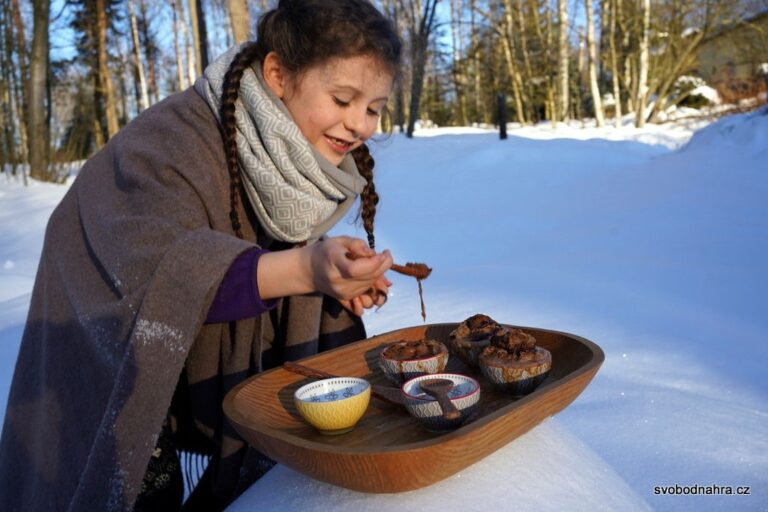
A physics experiment with a sweet reward.
YOU WILL NEED: a large bowl, a smaller bowl (ideally metal or any thin-walled bowl), salt, ingredients for ice cream
HOW TO DO IT:
It is something between "cooking" and a physics experiment. Definitely worth a try. Just mix snow with salt and thanks to the resulting cold, you can make delicious ice cream with the children.
Put some snow in a large bowl and mix it with six spoons of salt. Snow and salt will almost miraculously create a deep frost (supposedly down to -17°C) which will easily cool a smaller bowl (ideally a metal or any thin-walled one).
You can pour cream or regular or plant-based milk (almond, poppy or oat) into the smaller bowl. The children can also flavour the milk (with coconut sugar, marmalade or something else). Then just stir and stir (for approx. 15 min.). Be careful not to let the snow and salt fall into the smaller bowl with the ice cream; it's not very tasty.
If it's very cold outside, and the children are too impatient, you can take it home to get warm. As the snow melts with the salt, it still creates enough cold. If the children don't eat all the ice cream while stirring they can serve it at the end and flavour it (with coconut, date syrup, honey, carob, chopped almonds, etc.).

An activity for a walk or a trip that makes children want to go!
YOU WILL NEED: worksheets and pencils (optionally, writing pads)
HOW TO DO IT:
During a trip or in a designated place, the children in groups have a simple task, to find all things depicted in pictures from a worksheet and check them off. A check means that they found (saw) the image somewhere outside around them.
Those who are done can add their own picture to the worksheet. The printable worksheet can be downloaded here or you can make your own worksheets.
more lessons here
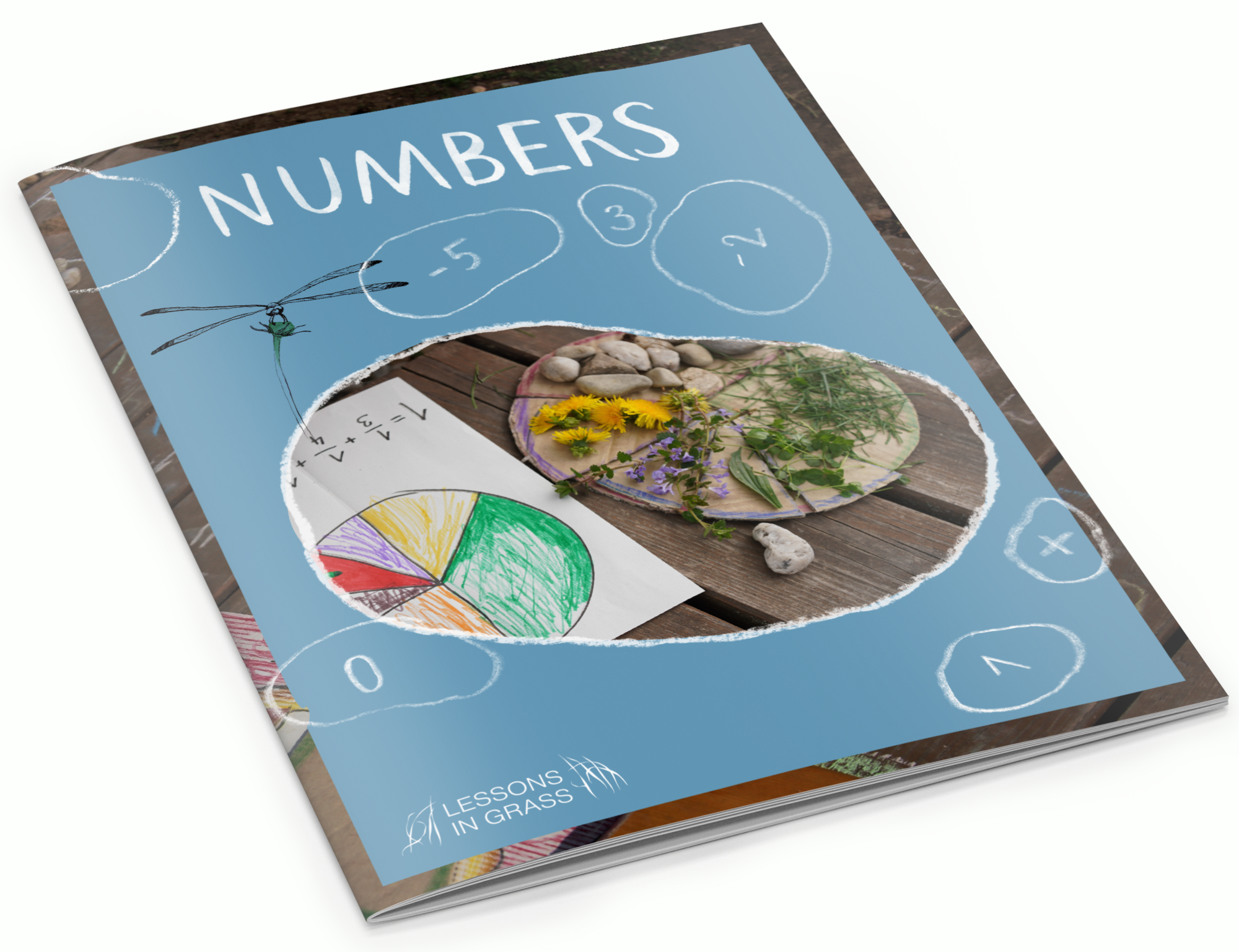
Numbers e-book
17 outdoor lessons in one e-book. Explore maths in a playful way! Let children move.
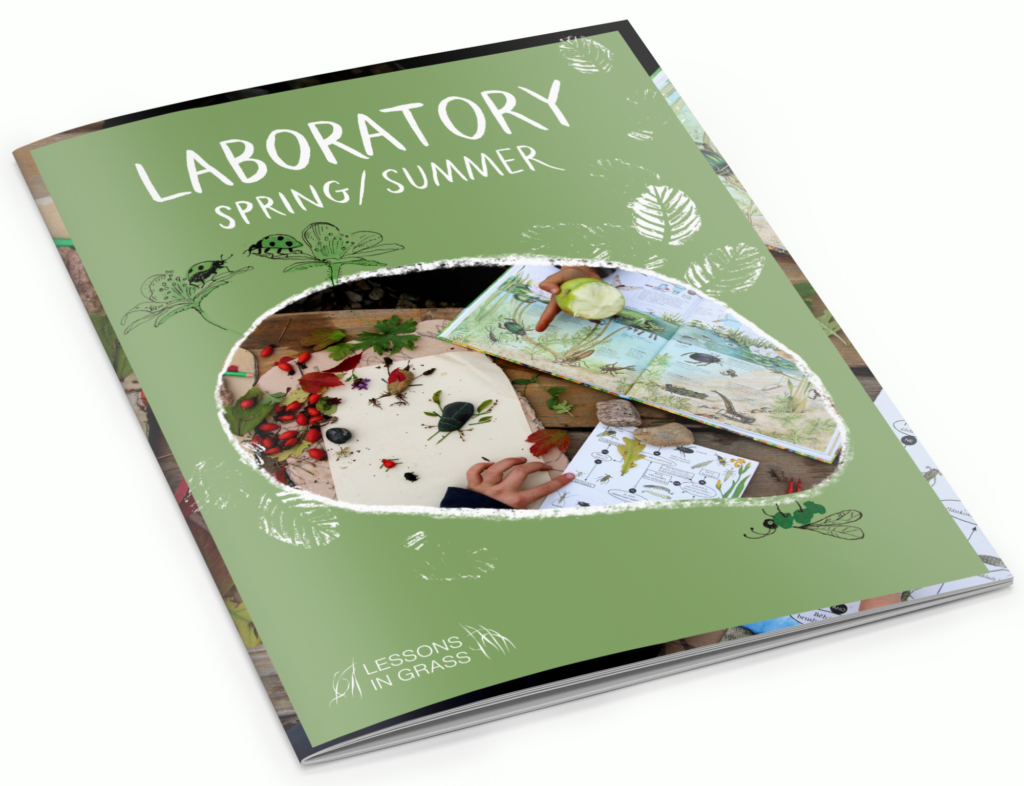
Laboratory e-book
spring/summer
18 outdoor lessons in one e-book. Let children explore the nature and be amazed.
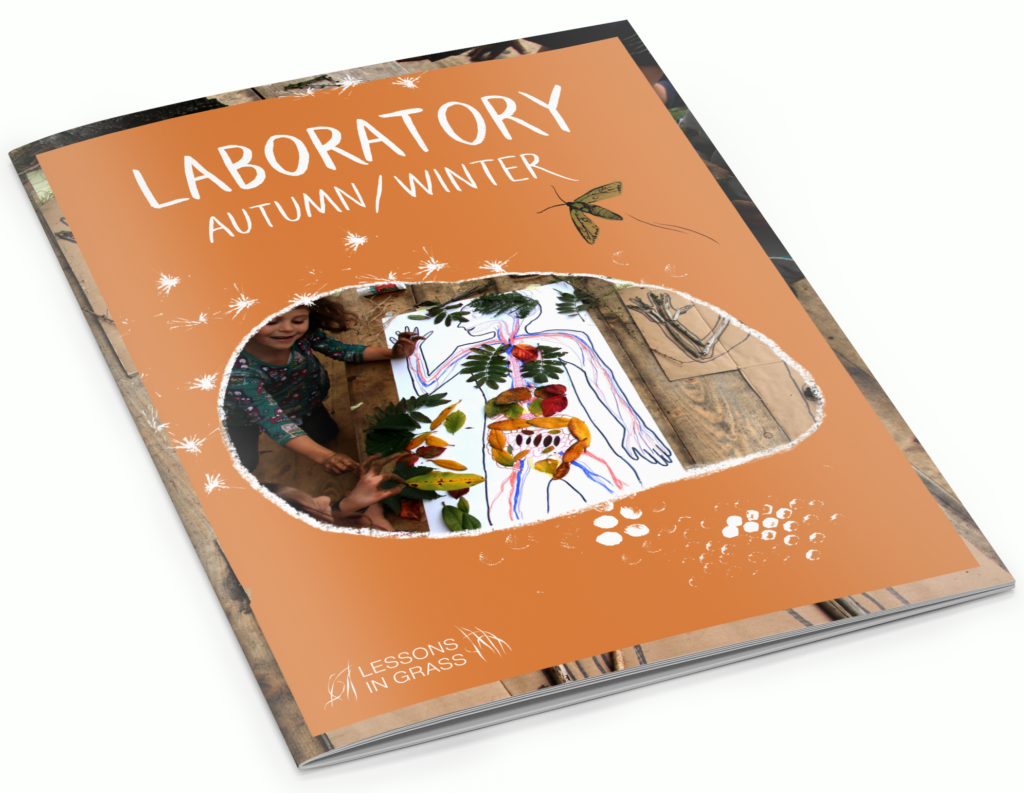
Laboratory e-book
autumn/winter
23 outdoor lessons will guide you through the cold season to get the best knowledge and fun of it!
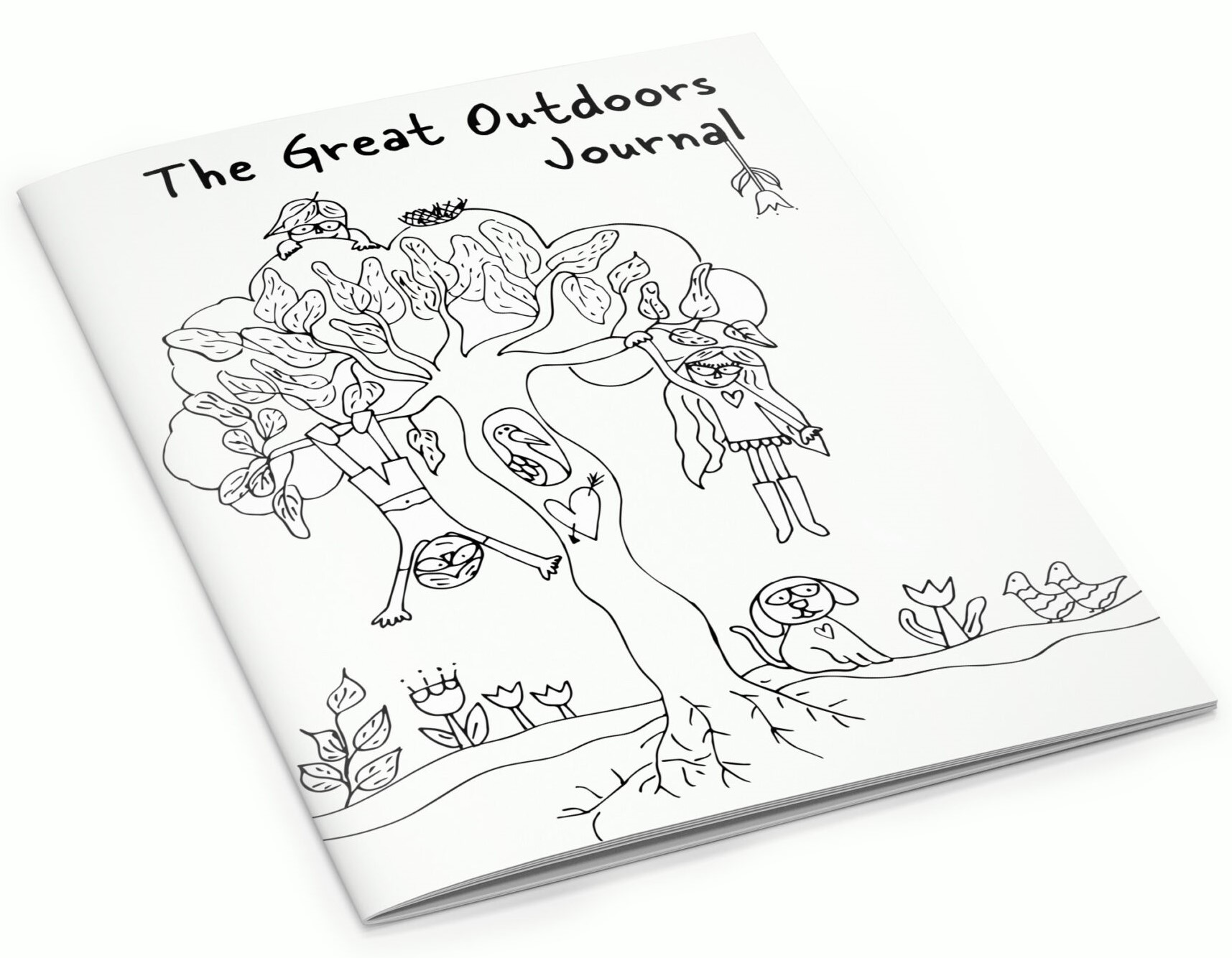
The Great Outdoors Journal
Let´s start exploring the outdoors! Design your own Journal.
DON'T MISS NEW LESSONS AND MATERIALS!
Would you like to receive news from Lessons in Grass by e-mail?
Subscribe to our newsletter
